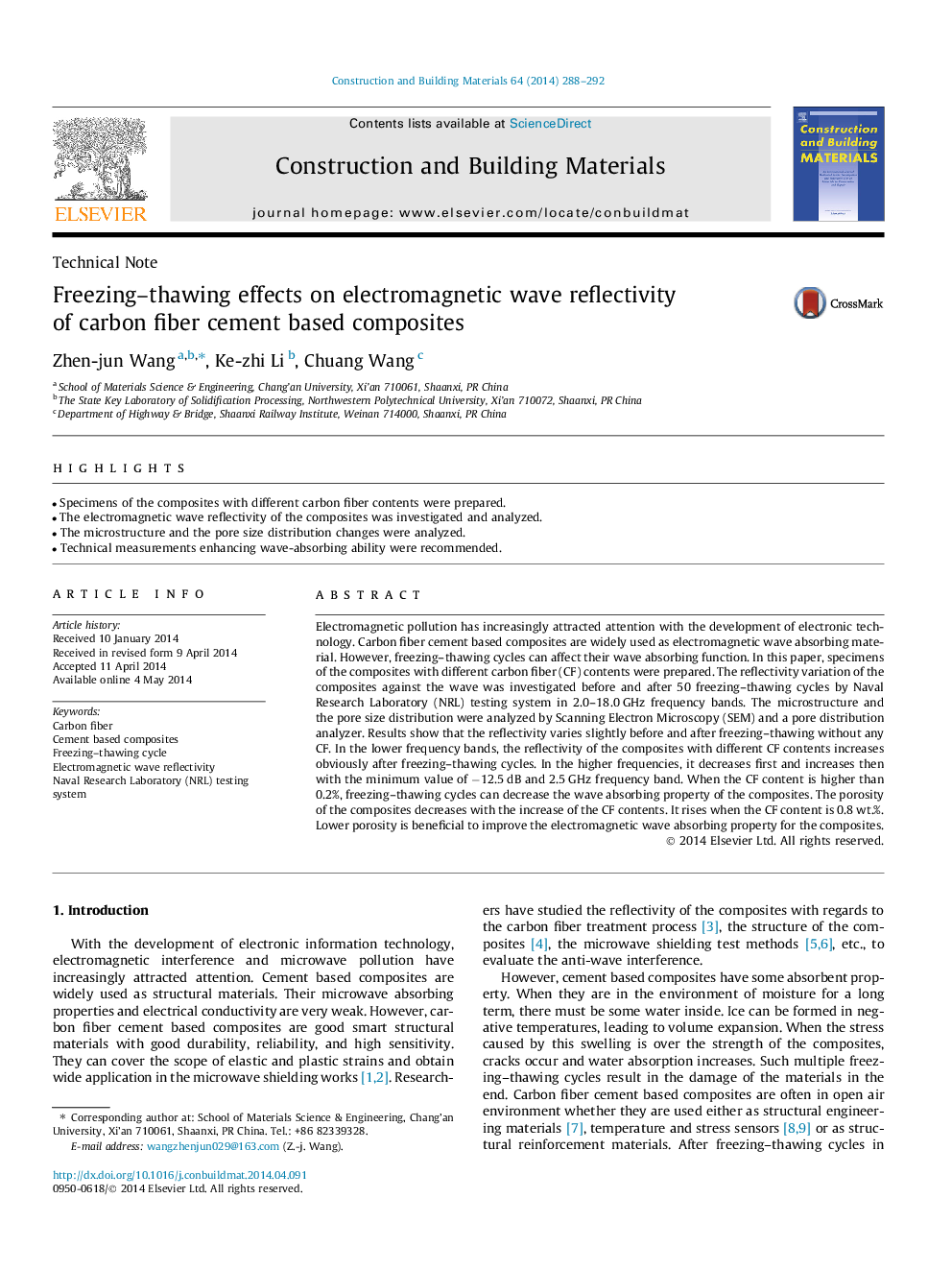| Article ID | Journal | Published Year | Pages | File Type |
|---|---|---|---|---|
| 257627 | Construction and Building Materials | 2014 | 5 Pages |
•Specimens of the composites with different carbon fiber contents were prepared.•The electromagnetic wave reflectivity of the composites was investigated and analyzed.•The microstructure and the pore size distribution changes were analyzed.•Technical measurements enhancing wave-absorbing ability were recommended.
Electromagnetic pollution has increasingly attracted attention with the development of electronic technology. Carbon fiber cement based composites are widely used as electromagnetic wave absorbing material. However, freezing–thawing cycles can affect their wave absorbing function. In this paper, specimens of the composites with different carbon fiber (CF) contents were prepared. The reflectivity variation of the composites against the wave was investigated before and after 50 freezing–thawing cycles by Naval Research Laboratory (NRL) testing system in 2.0–18.0 GHz frequency bands. The microstructure and the pore size distribution were analyzed by Scanning Electron Microscopy (SEM) and a pore distribution analyzer. Results show that the reflectivity varies slightly before and after freezing–thawing without any CF. In the lower frequency bands, the reflectivity of the composites with different CF contents increases obviously after freezing–thawing cycles. In the higher frequencies, it decreases first and increases then with the minimum value of −12.5 dB and 2.5 GHz frequency band. When the CF content is higher than 0.2%, freezing–thawing cycles can decrease the wave absorbing property of the composites. The porosity of the composites decreases with the increase of the CF contents. It rises when the CF content is 0.8 wt.%. Lower porosity is beneficial to improve the electromagnetic wave absorbing property for the composites.
